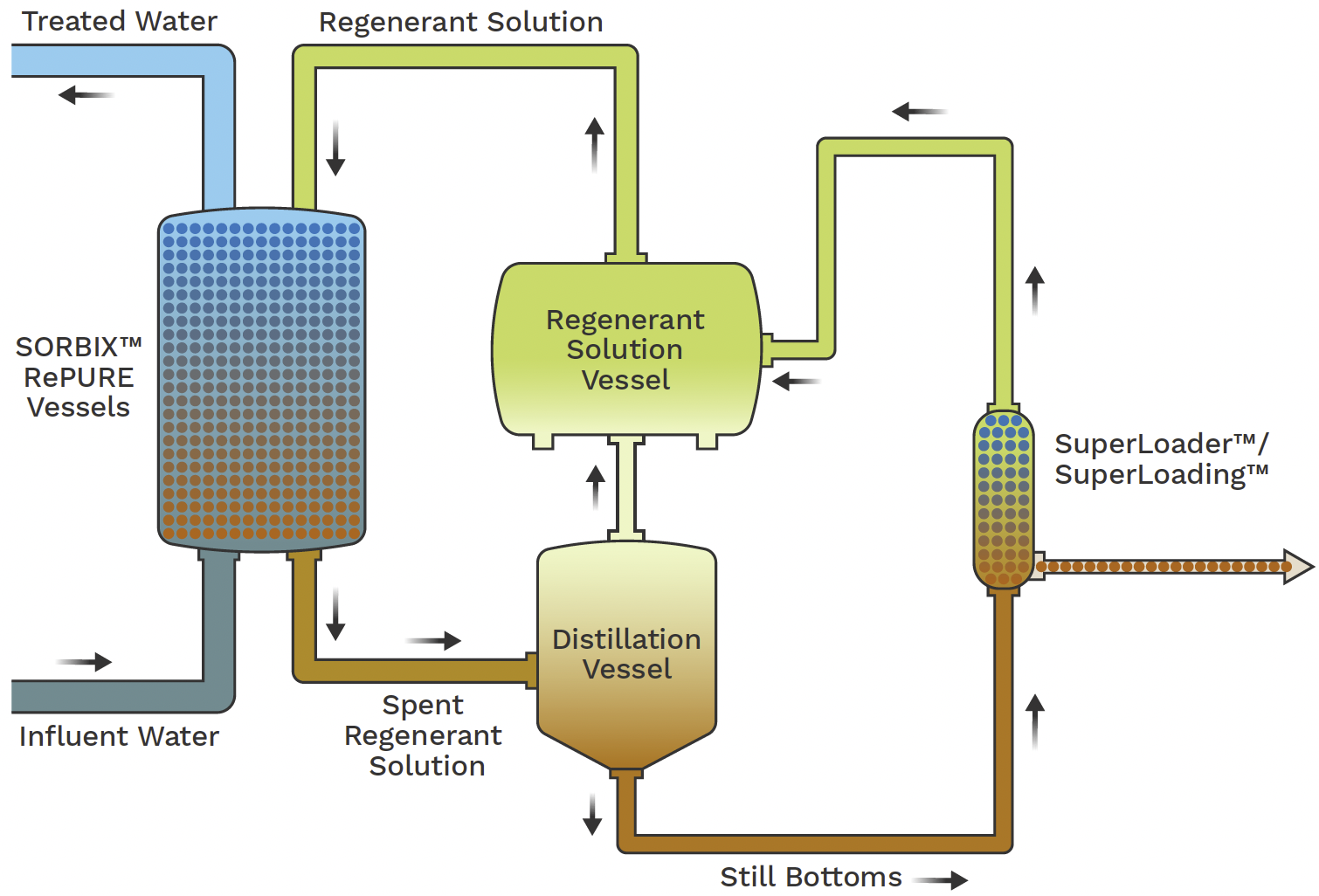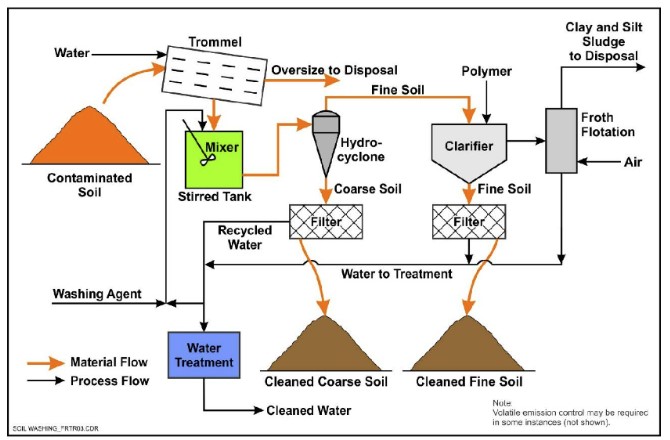Why PFAS Treatment Is Crucial for Eliminating Harmful Chemical Exposure
Wiki Article
Ingenious PFAS Therapy Solutions for Safer Water
The raising occurrence of PFAS contamination in water products demands a crucial evaluation of innovative therapy services. Advanced purification technologies and unique chemical treatments present appealing methods for lowering these persistent contaminants. Furthermore, arising bioremediation methods offer an even more lasting technique to tackling PFAS challenges. As regulative frameworks remain to adapt, understanding the performance and scalability of these remedies ends up being critical. What implications do these advancements hold for public health and environmental restoration, and how can stakeholders properly implement them in diverse contexts?Summary of PFAS Contamination
PFAS contamination has become a significant environmental and public wellness worry. Per- and polyfluoroalkyl compounds (PFAS) are a group of artificial chemicals understood for their persistence in the environment and human body, leading them to be frequently referred to as "forever chemicals." These substances have actually been widely used in different sectors, including firefighting foams, water-repellent textiles, and food product packaging, primarily as a result of their water- and grease-resistant residential or commercial properties.The extensive usage of PFAS has actually led to their detection in soil, water products, and also in the blood of human beings and pets. Research studies have actually linked PFAS direct exposure to various wellness issues, including developmental impacts in babies, body immune system disorder, and different types of cancer cells. In addition, the environmental persistence of these substances complicates their degradation and elimination, elevating worries about long-lasting ecological effects.
Governing bodies are increasingly executing stringent standards to keep track of and lower PFAS degrees in drinking water and other environmental tools. As recognition of PFAS contamination expands, it has ended up being critical for neighborhoods and sectors to seek reliable therapy options to minimize exposure and secure public health.
Advanced Purification Technologies
As the seriousness to resolve PFAS contamination magnifies, advanced purification technologies have actually arised as an essential component in the remediation efforts aimed at removing these relentless chemicals from water sources. These modern technologies leverage advanced systems to successfully target and capture PFAS compounds, which are infamously resistant to traditional therapy approaches.One of the most promising approaches is the usage of granular turned on carbon (GAC), which adsorbs PFAS particles because of its high area and permeable framework. This method has actually been extensively implemented in both local and industrial setups, showing significant reductions in PFAS concentrations. Furthermore, ion exchange materials have obtained grip, specifically developed to precisely bind PFAS ions from water, thus promoting their removal.
Membrane filtration technologies, such as reverse osmosis and nanofiltration, also show efficacy in PFAS removal by physically dividing pollutants from water - pfas management. These systems can achieve high levels of purity, making them suitable for alcohol consumption water applications
Chemical Treatment Innovations
Many chemical treatment advancements are being explored to successfully resolve PFAS contamination in water products. One appealing method involves making use of advanced oxidation procedures (AOPs), which use effective oxidants such as ozone, hydrogen peroxide, or chlorine dioxide incorporated with UV light to break down PFAS compounds right into less damaging materials. This method has actually demonstrated efficiency in research laboratory setups, showing prospective for scalability in real-world applications.One more innovative technique is the growth of ion-exchange materials especially designed to target PFAS. These materials can selectively adsorb PFAS compounds from water, enabling for their removal during therapy processes. Recent advancements have actually boosted the performance and capacity of these resins, making them a beneficial option for water therapy facilities.
In addition, scientists are checking out the usage of chemical representatives like persulfate and ferrous ions to boost the pfas management deterioration of PFAS in infected water. These agents can generate chain reaction that promote the malfunction of consistent PFAS compounds.
Emerging Bioremediation Methods
Recent innovations in chemical treatment innovations have actually led the way for checking out bioremediation techniques as a sensible option for dealing with PFAS contamination. Bioremediation uses the all-natural metabolic processes of microbes to degrade or transform contaminants, making it an appealing approach for taking on relentless contaminants like PFAS.
Arising methods in bioremediation include the use of genetically crafted microorganisms that can particularly target and damage down PFAS substances. These microbial pressures are being created for their boosted destruction capabilities, increasing the effectiveness of the remediation process. In addition, scientists are investigating the potential of plant-assisted bioremediation, where certain plant varieties might uptake and sequester PFAS from contaminated dirt and water.
One more appealing strategy is the application of bioaugmentation, which entails introducing useful microbes right into contaminated settings to enhance the deterioration of PFAS. This technique can help with much faster removal timelines and enhance overall efficiency.

Governing Frameworks and Standards
A detailed regulative framework is necessary for successfully handling PFAS contamination and making certain public wellness security. The raising acknowledgment of per- and polyfluoroalkyl substances (PFAS) as environmental contaminants has prompted various government and state firms to develop criteria that control their presence in water products. The U.S. Environmental Security Agency (EPA) has actually developed wellness advisories and is pursuing setting enforceable limitations for PFAS in alcohol consumption water.State-level laws vary dramatically, with some states taking on more stringent standards than those proposed by the EPA. These regulations typically include optimum contaminant degrees (MCLs) for particular PFAS compounds, tracking needs, and reporting obligations for water energies. Furthermore, emerging frameworks concentrate on the removal of infected sites, stressing the demand for effective therapy innovations.

Final Thought
Finally, the development and implementation of ingenious PFAS treatment remedies are crucial for dealing with the prevalent issue of water contamination. Advanced filtering innovations, chemical therapies, and emerging bioremediation methods collectively offer a complex approach to properly reduce and weaken PFAS levels. As regulatory frameworks continue to evolve, integrating these technologies will be vital to secure public health and wellness and bring back the stability of contaminated water resources, inevitably adding to a cleaner and much safer setting.Report this wiki page